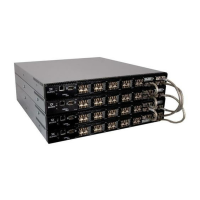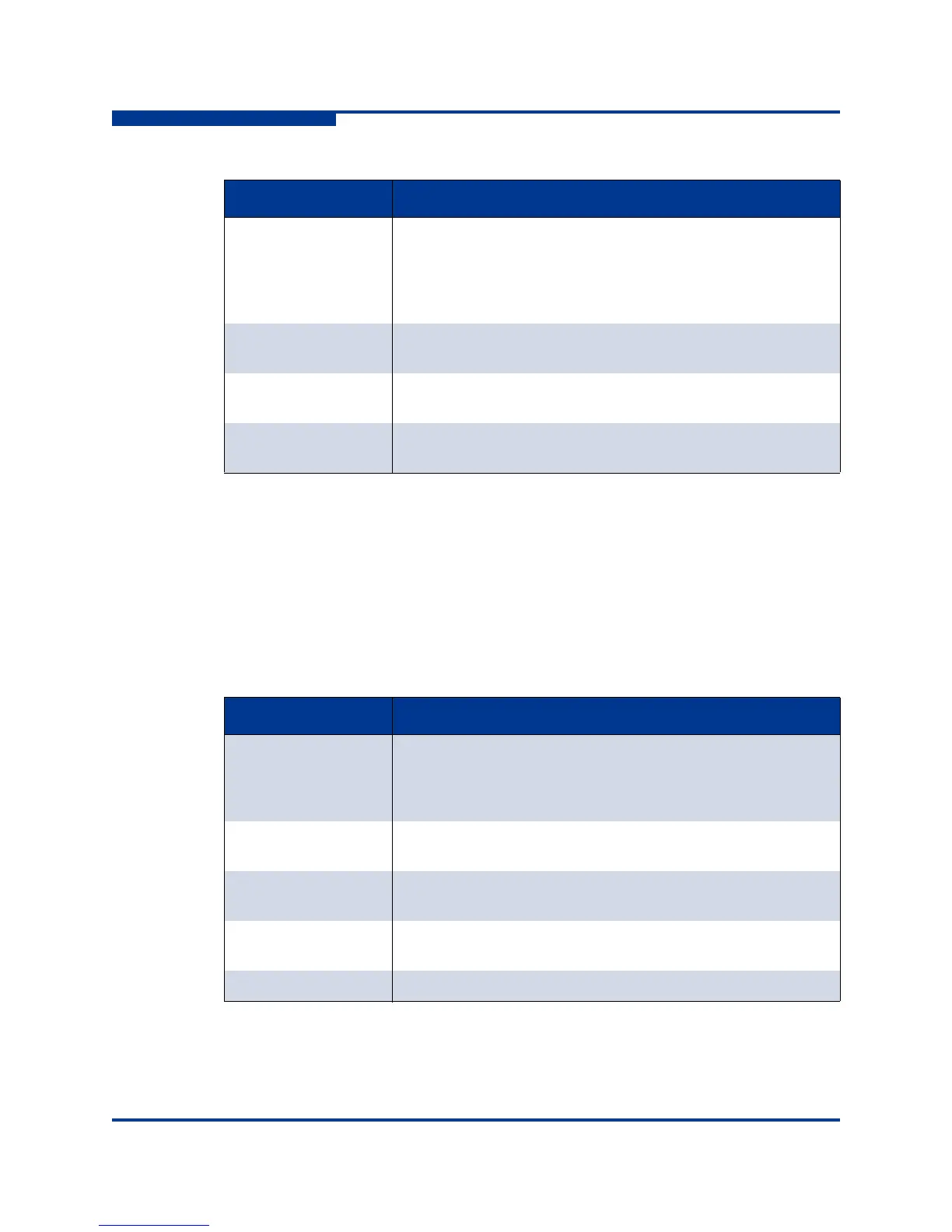14 – Command Reference
Command Listing
14-120 59263-02 A
S
trap [trap_number]
Prompts you in a line-by-line fashion to change SNMP trap parameters for the trap
number given by [trap_number]. [trap_number] can be 1–5. For each parameter,
enter a new value or press the Enter key to accept the current value. To configure
common parameters and trap parameters, omit the Trap keyword. Refer to
Table 14-29 for a description of the SNMP trap parameters.Table 14-30 describes
the trap parameters.
TrapCommunity Trap community password that authorizes an SNMP agent to
receive traps. This is a write-only field. The value on the switch
and the SNMP management server must be the same. The
trap community password can be up to 32 characters excluding
#, semicolon (;), and comma (,). The default is “public”.
AuthFailureTrap Enables (True) or disables (False) the generation of traps in
response to trap authentication failures. The default is False.
ProxyEnabled Enables (True) or disables (False) SNMP communication with
other switches in the fabric. The default is True.
SNMPv3Enabled Enables (True) or disables (False) SNMP version 3. The
default is False.
Table 14-30. SNMP Trap Configuration Parameters
Parameter Description
Trap [1-5] Address Workstation IP address (version 4 or 6) or DNS host name to
which SNMP traps are sent. The default address for trap 1 is
10.0.0.254. The default address for traps 2–5 is 0.0.0.0.
Addresses, other than 0.0.0.0, for all traps must be unique.
Trap [1-5] Port Workstation port to which SNMP traps are sent. Valid worksta-
tion port numbers are 1–65535. The default is 162.
Trap [1-5] Severity Severity level to use when monitoring trap events. The default
is Warning.
Trap [1-5] Version SNMP version (1 or 2) to use in formatting the trap. The default
is 2.
Trap [1-5] Enabled Enables (True) or disables (False) the SNMP trap.
Table 14-29. SNMP Common Configuration Parameters (Continued)
Parameter Description

